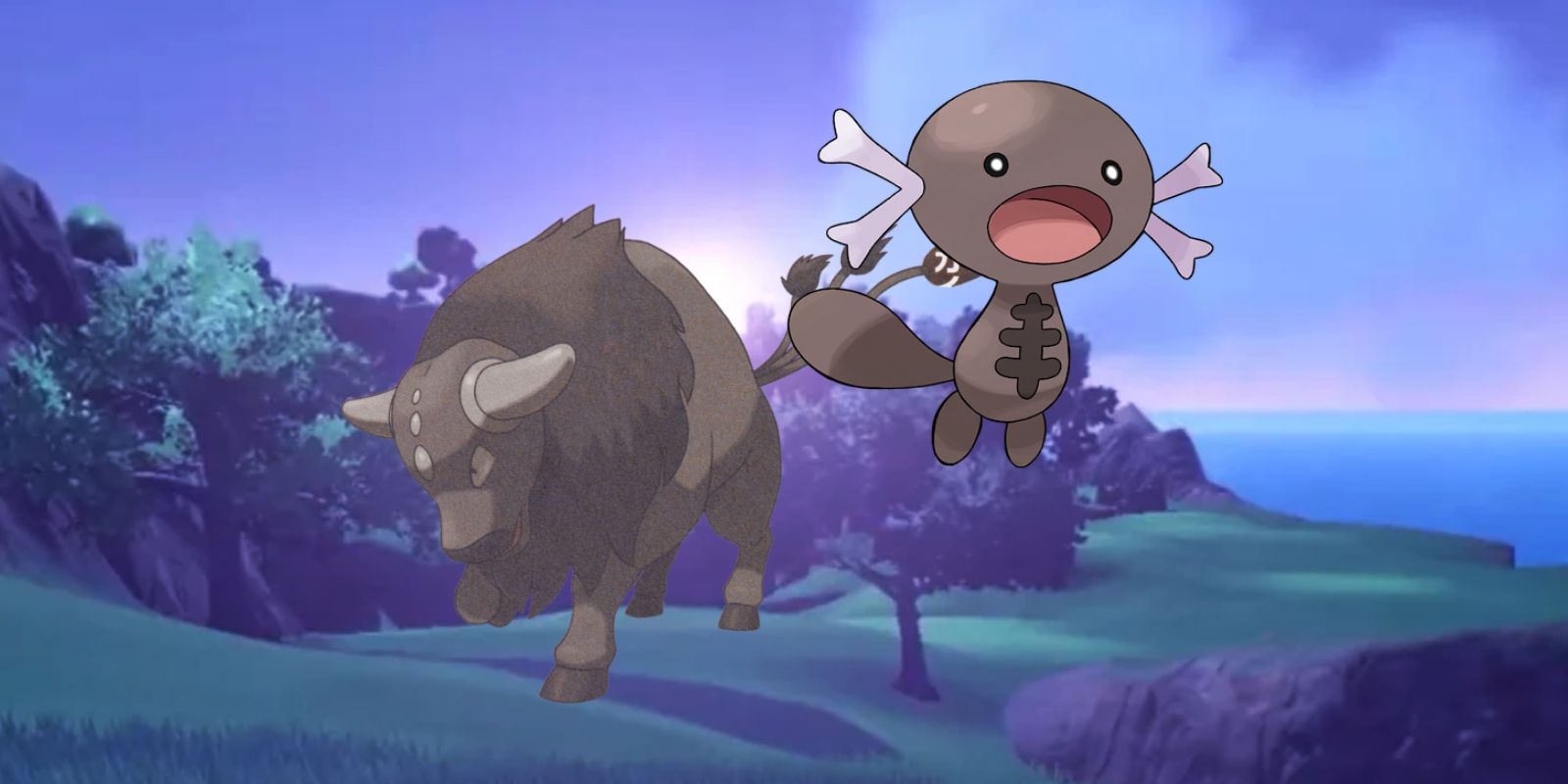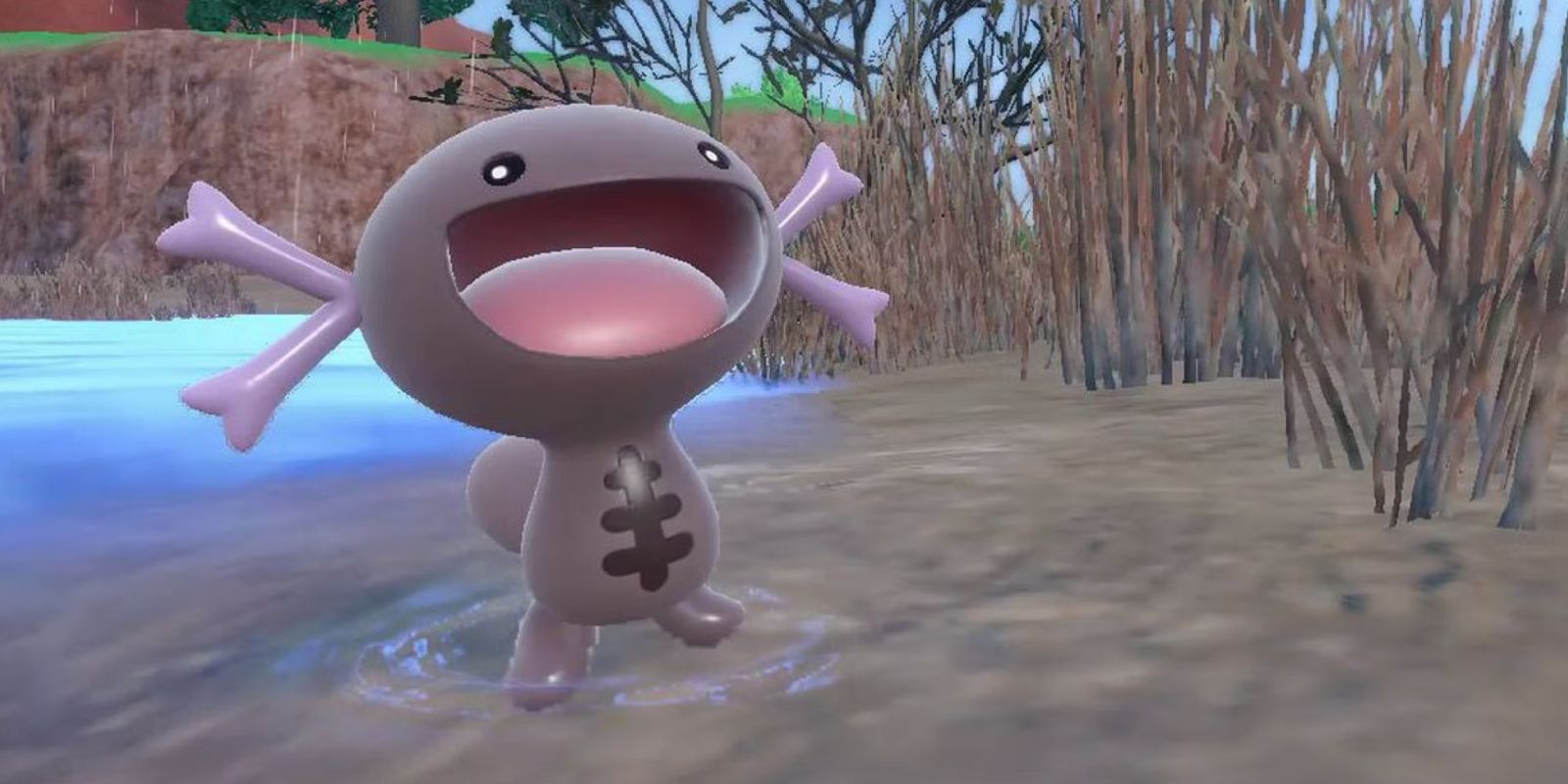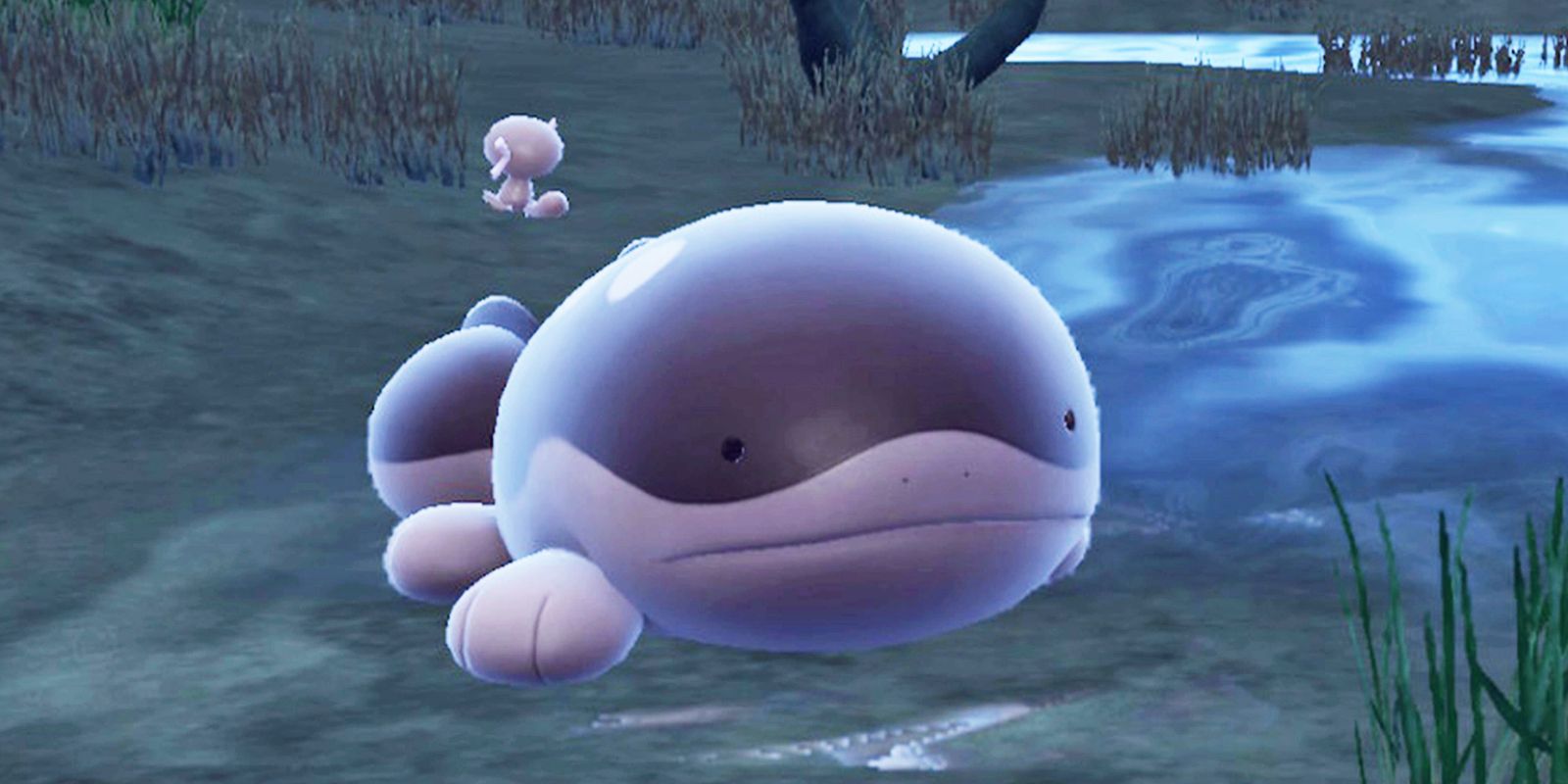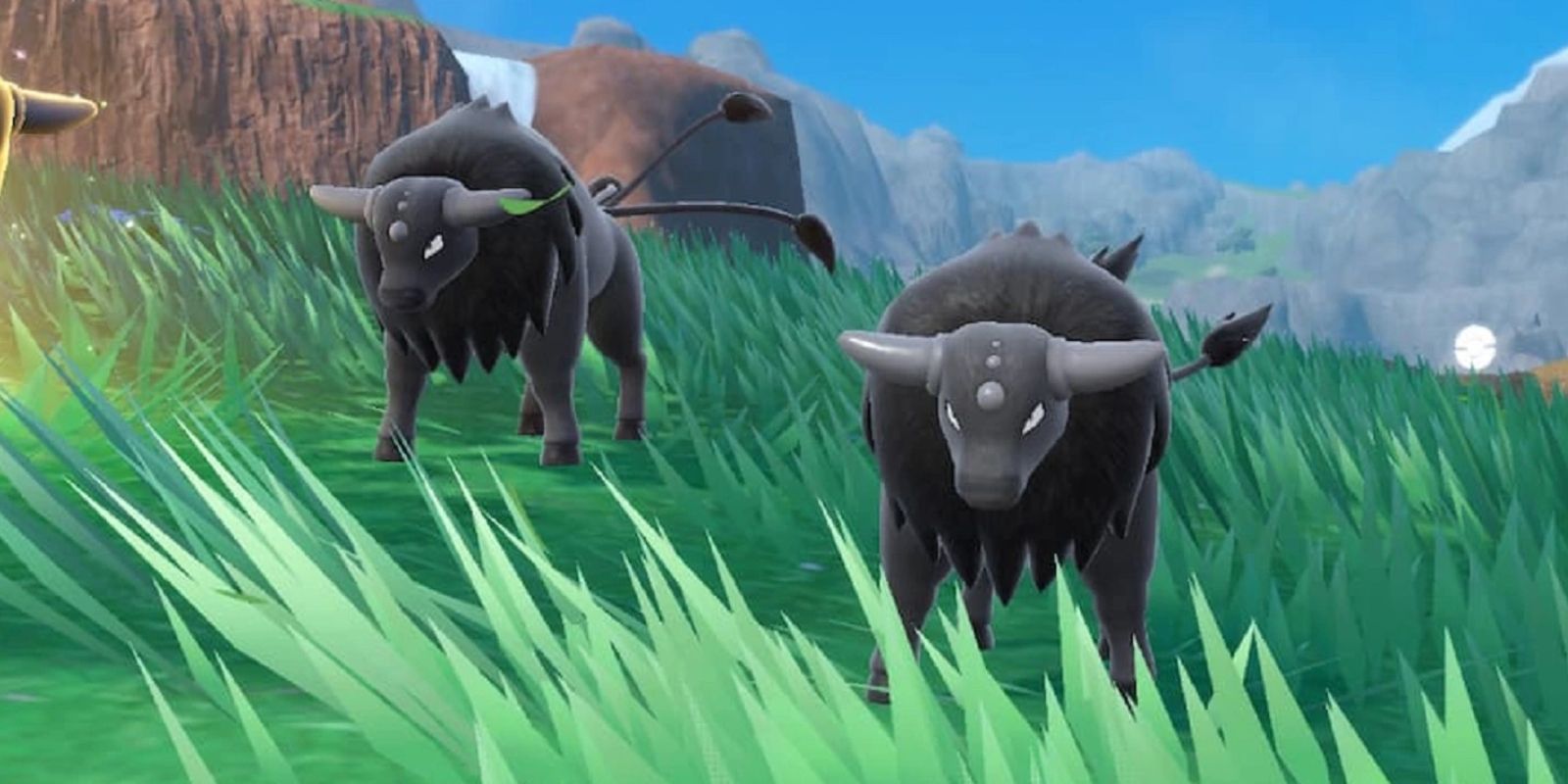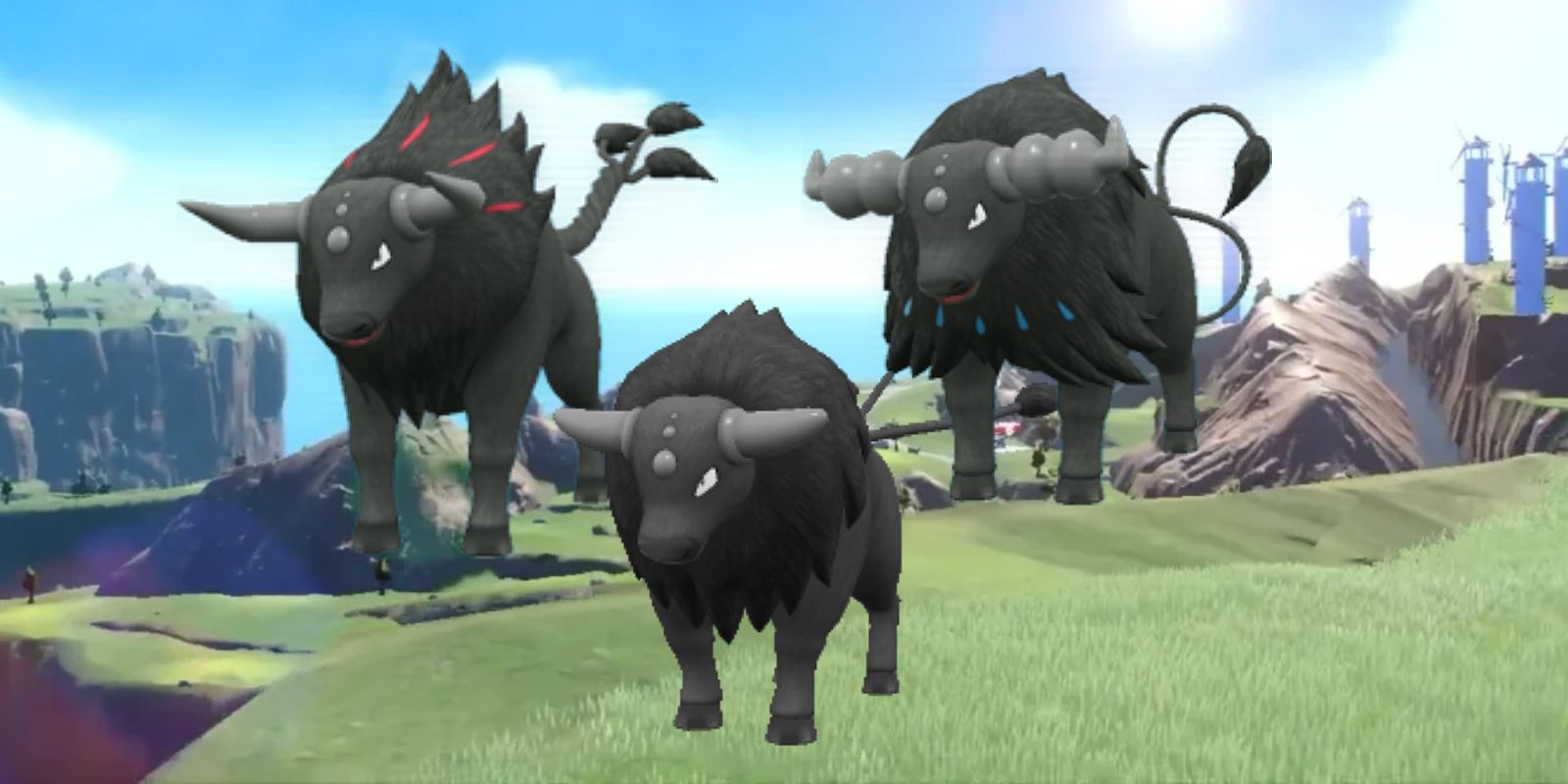When Pokémon Scarlet and Violet was released, it didn't just introduce a new region and Pokémon, but it also revealed regional variants of returning favorites from previous Pokémon games. There are a total of four Paldean forms to be found throughout the game - five if one is to count the Paldea-exclusive evolution introduced in Pokémon Scarlet and Violet - and while that's significantly less than what players have seen in previous regions, it still helps add some variety to the Gen 9 Pokédex.
Players learned about Pokémon Scarlet and Violet's new region, Paldea, fairly early on before its release. The setting primarily draws inspiration from Spain and, like the real region it was based off of, has a unique history and geography, both of which contribute to the appearance of the game's Paldean forms. Paldean Wooper, one of the two primary regional variants introduced in Pokémon Scarlet and Violet, adapted its form on account of the region's many bogs. Paldean Tauros, on the other hand, has various different breeds within Paldea, perhaps as a nod to the breeding of bulls for use in bullfighting. Fortunately, the Pokédex in Pokémon Scarlet and Violet helps shed some light on the game's regional variants and why they emerged.
Why Paldean Wooper Looks Different In Pokémon Scarlet & Violet
Although Scarlet and Violet are Pokémon's lowest-rated games, they still have their fair share of stand-out elements, and Paldean Wooper is one example in the eyes of many Pokémon fans. Given that Wooper was introduced early on in the Pokémon franchise, it's been a staple of the series for years, and a regional variant felt long overdue.
Visually, Paldean Wooper is largely identical. The shape of its gills is different, and the Pokémon is brown rather than blue. It also has distinct markings on its belly. There's actually a rich history behind these changes, however. It's another indication of how intricate Pokémon's world design is. There's a reason why Pokémon Scarlet and Violet's biggest story spoilers were the most compelling element of the game to many players.
Within the Paldea region of Pokémon Scarlet and Violet, Wooper lost a territorial struggle, pushing the entire species from the water onto land, where they live in bogs. There, they evolved to develop a poisonous film over their body. This keeps them from drying out. Their gills have hardened as another side effect of living on land, and their movement speed is slower due to having heavier bodies. Paldean Wooper are capable of ranged defense, though, as they can shoot poisonous liquid from their gills.
Pokémon Scarlet & Violet's Wooper Evolves Into Clodsire
Paldean Wooper also has a unique evolution compared to regular Wooper in the Pokémon series. It's not a first for the games - Pokémon Sword and Shield has three Rockruff evolutions, for instance - but it is a brand-new addition to the Wooper evolution line. Whereas regular Wooper evolve into Quagsire, Paldean Wooper evolve into Clodsire. The two evolutions look nearly completely different. Clodsire retains Wooper's brown skin and some abilities that reflect the species' evolution. For example, Clodsire can produce spines from its back as a form of self-defense. It can also frequently be seen transporting Woopers across bodies of water.
Tauros' New Appearance In Pokémon Scarlet & Violet's Paldea
Wooper isn't the only returning Pokémon sporting a new regional variant, though. Pokémon fans will likely be quick to take note of Tauros' new look in Pokémon Scarlet and Violet. It's worth noting that variants like Paldean Tauros and Wooper are different from convergent species such as Pokémon Scarlet and Violet's new Wiglett species. Toedscool is another example of the latter. Tauros, however, isn't a distinct but related species. It's simply an altered form of an existing Pokémon.
In Pokémon Scarlet and Violet, Tauros doesn't just appear in its basic form. It also has three distinct breeds, each of which is a different type. All three of the Tauros breeds in Paldea have darker fur and slightly different tails from those seen on regular Tauros. There are some other physical distinctions, too, that correspond to the combat capabilities of each breed. It's worth noting, however, that some are exclusive to either Pokémon Scarlet or Pokémon Violet. Players will need to trade to acquire all of them, regardless of their opinion on which Pokémon version has the best exclusives.
Every Breed Of Paldean Tauros In Pokémon Scarlet & Violet
Combat Breed Tauros is a Fighting-type Pokémon as opposed to a Normal-type like the species' original design. The Pokédex in Pokémon Scarlet and Violet notes that it's exceptionally well-muscled and aggressive. The Blaze Breed, exclusive to Pokémon Scarlet, is a Fighting and Fire dual-type that is known for breathing very hot air from its nostrils.
Its horns can also reach over 1,800 degrees Fahrenheit when heated by fire energy, meaning that any trainer who may have the misfortune of suffering from a Tauros attack will find themselves with burns on top of other physical injuries. While it may not be one of the best postgame Scarlet and Violet Pokémon, it still packs a punch. Aqua Breed, exclusive to Pokémon Violet, is a Fighting and Water dual-type as the name might imply. Higher body fat allows it to float easily, and it propels itself by jetting water from its horns. This can also be utilized in combat.
As mentioned before, there are surprisingly few Paldean regional variants in Pokémon Scarlet and Violet. Only two, in fact, if the different breeds of Tauros and Wooper's evolution aren't counted. In comparison, there were over a dozen Alolan forms in Pokémon Sun and Moon, and almost twenty Galarian forms in Pokémon Sword and Shield. Even Pokémon Legends: Arceus proved that Pokémon games need more regional variants. As such, some players may find Pokémon Scarlet and Violet's slim offerings to be disappointing. However, the Paldean regional variants still showed that these forms are a continuing trend in the franchise.

